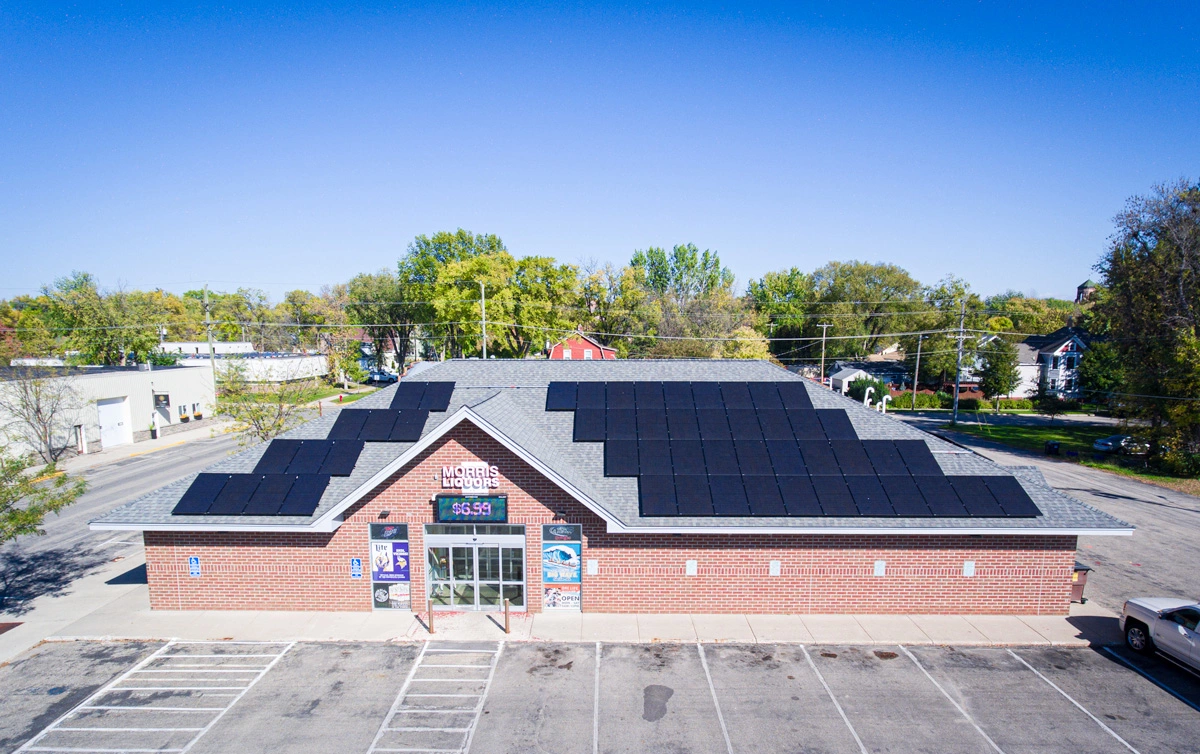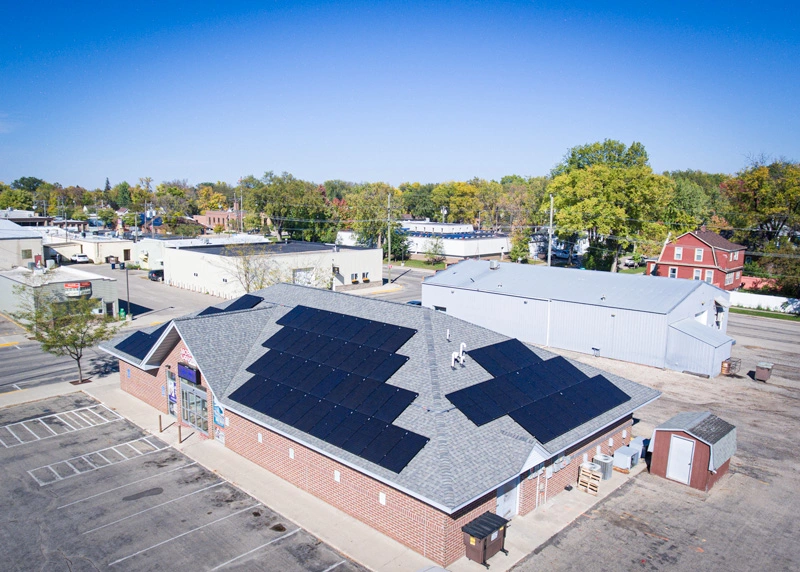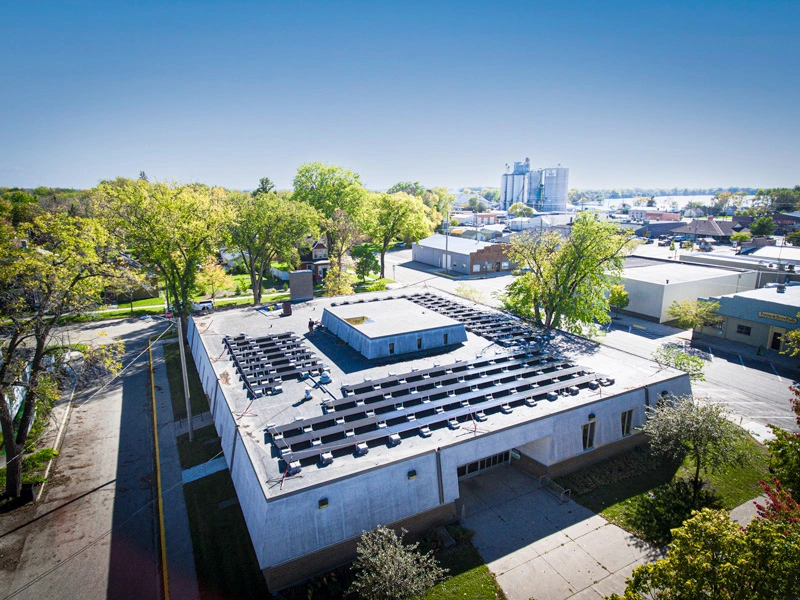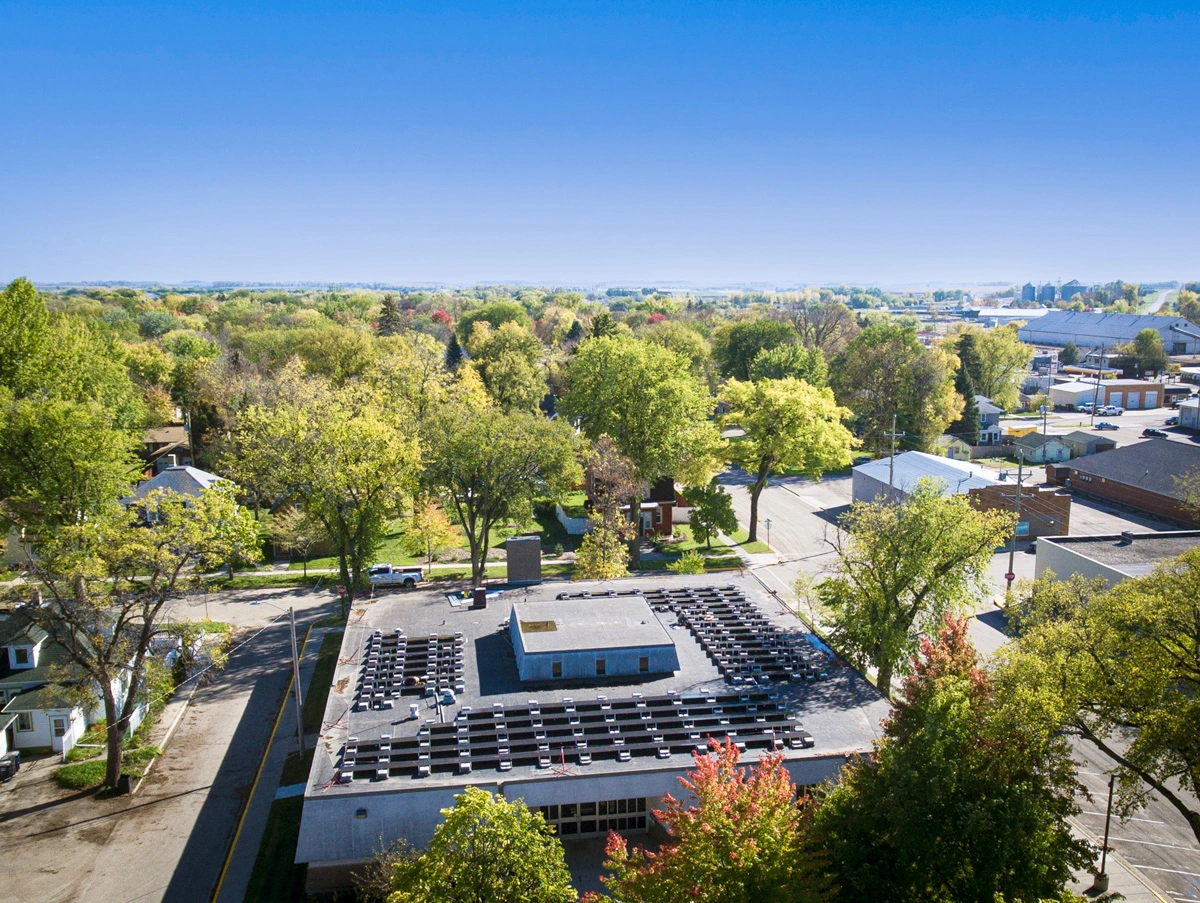150.39 kW DC
across four sites
176,171 kWh
137,994 lbs of coal
burned annually
Trina
$663,670
The city of Morris, Minnesota, a community 47 miles from the Minnesota-South Dakota border, is leading by example when it comes to municipal sustainability and overall community resiliency efforts. The culmination of these efforts is called “The Morris Model” and it tackles critical areas like waste management, energy consumption and conservation, and water conservation. As part of this model, Morris will use renewable energy sources like solar to provide 80% of their electrical needs by 2030. Blue Horizon Energy is proud to have worked with the visionary folks in Morris to design and install on-site solar power arrays that bring carbon-free electricity to the public library, community center, city hall, and municipal liquor store.
Solar power is only one component of the Morris Model, but city leaders across the midwest ought to know that, by design, the Morris Model is repeatable. It proves just how cities can lower their community’s environmental impact while also providing added resiliency in the event of extreme weather events. If you want to learn more about the Morris Model, listen to this episode of the Local Energy Rules Podcast, originally recorded in November 2021.
The city of Morris, Minnesota, a community 47 miles from the Minnesota-South Dakota border, is leading by example when it comes to municipal sustainability and overall community resiliency efforts. The culmination of these efforts is called “The Morris Model” and it tackles critical areas like waste management, energy consumption and conservation, and water conservation. As part of this model, Morris will use renewable energy sources like solar to provide 80% of their electrical needs by 2030. Blue Horizon Energy is proud to have worked with the visionary folks in Morris to design and install on-site solar power arrays that bring carbon-free electricity to the public library, community center, city hall, and municipal liquor store.
Solar power is only one component of the Morris Model, but city leaders across the midwest ought to know that, by design, the Morris Model is repeatable. It proves just how cities can lower their community’s environmental impact while also providing added resiliency in the event of extreme weather events. If you want to learn more about the Morris Model, listen to this episode of the Local Energy Rules Podcast, originally recorded in November 2021.
Listen Here: Local Energy Rules Podcast Leaders in Morris, Minn., Create a Model for Rural Resilience
“My favorite project is the solar at the liquor store. Now, when I go and get my beer, and know that it’s cooled by the sun, it’s kind of an awesome deal.”

“Working with Blue Horizon Energy on our city’s first solar PV project has been a fantastic experience. The company and staff are incredibly responsive to our inquiries and concerns, and we felt that they fully understood and appreciated the importance of the project for our community in meeting sustainability goals.”


“Our confidence in selecting Blue Horizon Energy for the project – established by their reputation and impeccable references from past completed projects – has only been reinforced throughout the process by their timely delivery of services, prompt and transparent communication, quality of workmanship, and excitement to work with our local government to increase community familiarity and awareness of solar PV.”

Leave a message and we’ll contact you as soon as possible.

We Build Better Solar

We Build Better Solar
